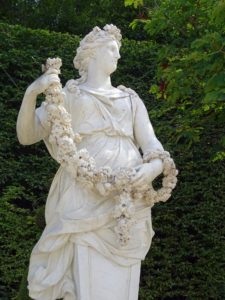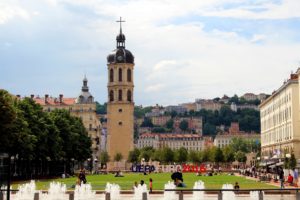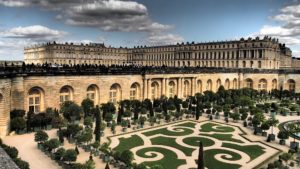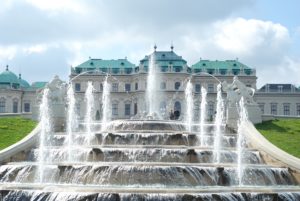Visit the Extravagant Gardens of Versailles
Once a country village, Versailles is now a thriving suburb of Paris that is rich in history and striking architecture. The Royal Chateau, now called the Palace of Versailles, refers to the now famous landmark which symbolizes the era of absolute monarchy, referred to as the Ancien Régime. Established by Louis XIV as the centre for his royal court, the Palace of Versailles was the hub of political power in France from 1682 until October 1789, when the French Revolution began. According to the French Minister of Culture, the Garden’s of Versailles, located to the west of the Palace, are host to over 6 million visitors annually, and the Gardens were added to the World Heritage List in 1979 of UNESCO–United Nations Educational, Scientific and Cultural Organization–in 1979.

The Creation of a Historical Landmark
When someone thinks of the term building construction in its modern use, images of skyscrapers appearing seemingly overnight probably come to mind. Architecture and building projects in centuries past were complicated and costly endeavors. However, to produce such artistry of design seen in wonders like the Palace of Versailles, an enormous amount of time and dedication is required. Four major building campaigns between 1664 and 1710 gave the world the fascinating and engaging Palace of Versailles.
The Garden’s of Versailles
The same intricate detail and artwork evidenced in the architecture of the Palace are repeated again in the Garden’s of Versailles, the most famous gardens in the world. One of the most exquisite examples of French garden artistry that exist, they are one of the most visited public attractions in all of Europe. Located on what was once part of the family estate of the Chateau, the gardens boast 800 hectares of trees, flowers, fountains and sculptures.
Surrounded  by woodlands, the gardens are bordered by metropolitan areas of Versailles to the East and the National Arboretum of Chevreloup to the North. A wildlife preserve called the Versailles Plain lies to the west of the gardens, and the Satory Forest runs along its southern border. In keeping with the classic French garden motif, the signature of famous botanist Andre Le Notre, can be seen throughout this vista of beauty.
by woodlands, the gardens are bordered by metropolitan areas of Versailles to the East and the National Arboretum of Chevreloup to the North. A wildlife preserve called the Versailles Plain lies to the west of the gardens, and the Satory Forest runs along its southern border. In keeping with the classic French garden motif, the signature of famous botanist Andre Le Notre, can be seen throughout this vista of beauty.

Trees and Flowers
Over 210,000 flowers are planted annually by those dedicated to keeping the gardens eternally beautiful. In the traditional Parterre format, the flower beds are arranged to present botanical symmetry at its best. There is little sense of enclosure as one walks about in the garden’s extensive environment. Once home to only wetlands and meadows, thousands of flowers can now be enjoyed by visitors each day.
Almost 200,000 trees grace the grounds of the Palace gardens, some of which are staggering in height. In addition, potted trees in the orangery add to the resplendent aura one experiences while walking the many paths, and landscapers from all around the world come to observe their decidedly appealing arrangement.
Statues and Fountains
In many parts of the world, the word garden brings to mind fountains and sculptures, as well as flowers and other vegetation. The Garden’s of Versailles certainly fulfill this image, boasting over 50 fountains and statues. It is not uncommon to see a painter or other artist studying these, since such brilliant works of art are usually only found within a museum. Each weekend from spring to early autumn, museum sponsors feature an event called the Grandes Eaux – timed displays during which the fountains are in full play.

Tips for Enjoying the Gardens
The unique blend of natural and man-made beauty is the key to the mesmerizing effect of the gardens, and one should not forget to bring his or her camera. Maps of the garden are provided for tourists, and they come highly recommended as the property is vast, and it can be easy to lose one’s sense of direction.
The gardens, opened from 7am until sunset each day of the year, offer free admission from November to March. One will want to reserve an full day to see all the gardens have to offer, and a substantial number of travellers choose a guided tour, especially if they are visiting for the first time.
A sightseer can be picked up by his or her guide from the Paris Gare du Nord station if travelling by Eurostar, or within the city of Paris, if not travelling by rail. Sundays are typically the most crowded day for sightseeing in the gardens, so a person may wish to avoid this day. However, touring the gardens is an unforgettable activity whenever one decides to pursue the experience.






Leave a Reply